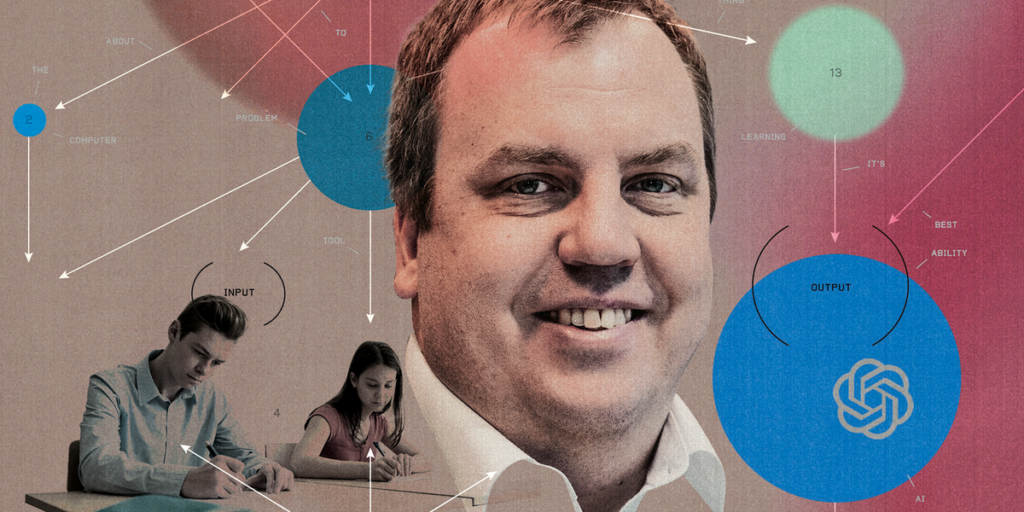
Estonia’s reputation as one of the world’s most digital state-of-the-art countries thanks to its effective digital platform for government services and its startup-friendly culture. Its citizen digital capabilities are largely due to the government’s decades-long movement to bring technology to schools. Now, the government will launch the 2025 AI LEAP, which will provide AI tools for 20,000 high school students in September. Siim Sikkut, a former member of the Estonian government and part of the launch team, said the AI LEAP program is more than just providing access to new technologies. Its goal is to provide students with the skills they need to use ethically and effectively.
slime sikkut
Siim Sikkut served as Chief Information Officer of the Government of Estonia from 2017 to 2022, in which he developed policies on digital government operations, cybersecurity and connectivity. He is currently a managing partner at Digital Nation, an Estonian consulting firm that works with governments around the world.
What is the Tiger Leap plan, and it’s a model of what you’re doing right now?
Siim Sikkut: Tiger Leap is a program from the 90s that brings computers and the internet and basic digital skills to all schools in Estonia. I personally had access to all the internet because at the time, we didn’t have the opportunity to use them at home. These boys and girls became the founders of industrial and digital government, so it allowed us to build digital society in Estonia.
How does the AI LEAP plan follow this model?
Sikkut: Our idea is that now we have to make the same leap and expose the younger generation to the next wave [of technology]. There are differences between programs. Then we will provide you with access and tools related to what you like. Now, with AI tools, we think it is necessary to be more carefully planned. You need to learn to use them, not get a easier way from your assignments. So it’s not just a visit to the job, it’s a skill effort.
What will this look like in practice? What tools can students use?
Sikkut: We are still negotiating with partners and suppliers, so I will not name the company. But fundamentally, we are talking about the AI assistants who are trained in the context of Estonian languages and Estonian courses. It will be used for educational purposes, so neither you nor I will use it in our daily lives. It will support more learning. For example, you not only want to submit an assignment and find an answer. In this case, the tool starts to give you more tutoring instead of giving you an answer. We will recreate conversational AI as a learning assistant, and ideally we will add many topic-based applications to it. We will have at least one tool, a conversation tool, and then build it in the next few years.
Can the teacher see what the students are doing?
Sikkut: We may have to start it with the basics first. However, the idea is that we will have two apps, a teacher’s assistant and a student’s app, so the teacher will get feedback or advice on how to better guide a particular student. The idea is to make learning more personalized to achieve better learning outcomes.
When we hear about AI in education, there is often a doom and melancholy attitude, such as: “This will destroy the minds of the next generation. They will never learn anything. They will only have these shortcuts.”
Sikkut: These same concerns have made us do more in this regard. What really drives us are two very pragmatic considerations. Many children use it [AI tools] Anyway, alternative thought is not just about supplementing it. We have numbers, and 70% of high school kids use them anyway. Therefore, harmful uses already exist, and we want to refute this. Second, there is a gap in use, perhaps due to socio-economic background. But Estonia’s entire education system is built on unified opportunities. So it’s also an attempt to make sure we don’t increase the gap in the future.
What are the opportunities you see for students?
Sikkut: We bet this is a competitive factor. If you are not there, you will be excluded. In the labor market, as a country, we are saying, “Hey, look, you need to know how to make the most of these tools.”
The current plan will provide tools for 10th and 11th grade students, right?
Sikkut: Yes, we are now focusing on high school and vocational education. But there is still a debate: Should we be young? The jury still makes sense. You need to have some independent thinking and learning discipline and just be a self-driven learner. That didn’t start early.
Worry or not Hallucination And how to teach children how to check accuracy?
Sikkut: This happens to get into the technical skills of using these things. Unfortunately, hallucinations are facts of life, they will be [being]. These AI skills will be taught by applying them in the rest of the courses. So in history class, when you use this AI learning assistant, you are where you understand hallucinations and how to beware of them.
Have you talked to your teacher about this plan? Are they accepting or nervous?
Sikkut: These are all the above. You can imagine that you have an early adopter enthusiasm. Today, they have used these tools to plan their lessons, or they run papers through AI tools. On the other hand, you have people with basic digital literacy, but they don’t want anything. We will communicate to ensure that the teacher remains calm about it. The main message we are trying to tell teachers is that they have not yet obtained a complete tool suite. They will be part of the experimental program.
A version of this article appears on the July 2025 issue, namely “5 issues with Siim Sikkut”.
From your website article
Related articles around the Internet
